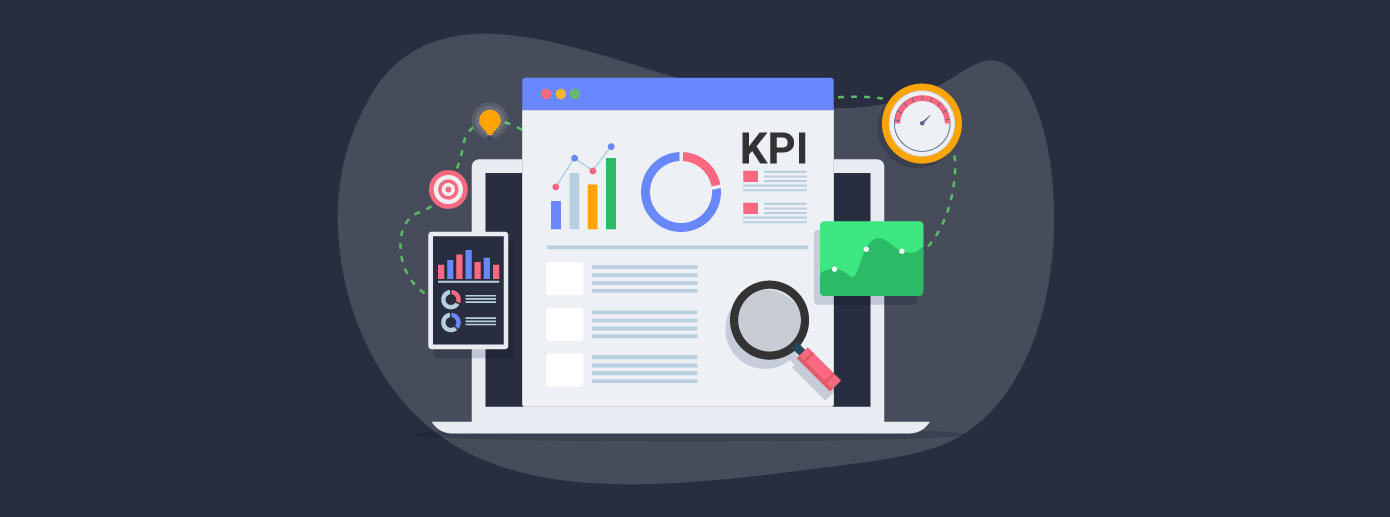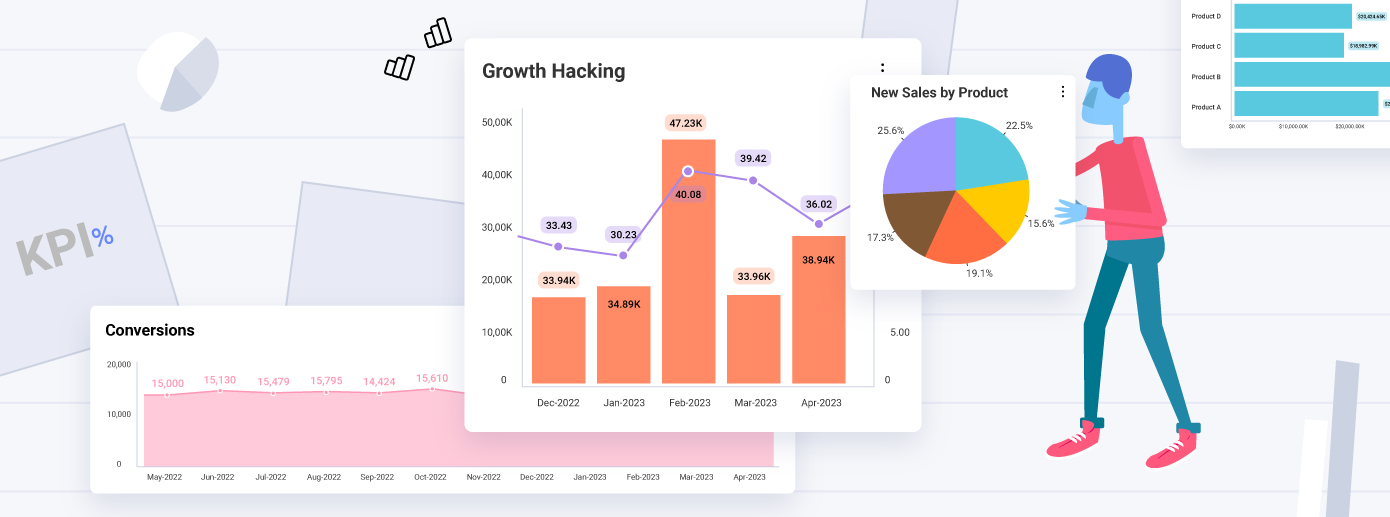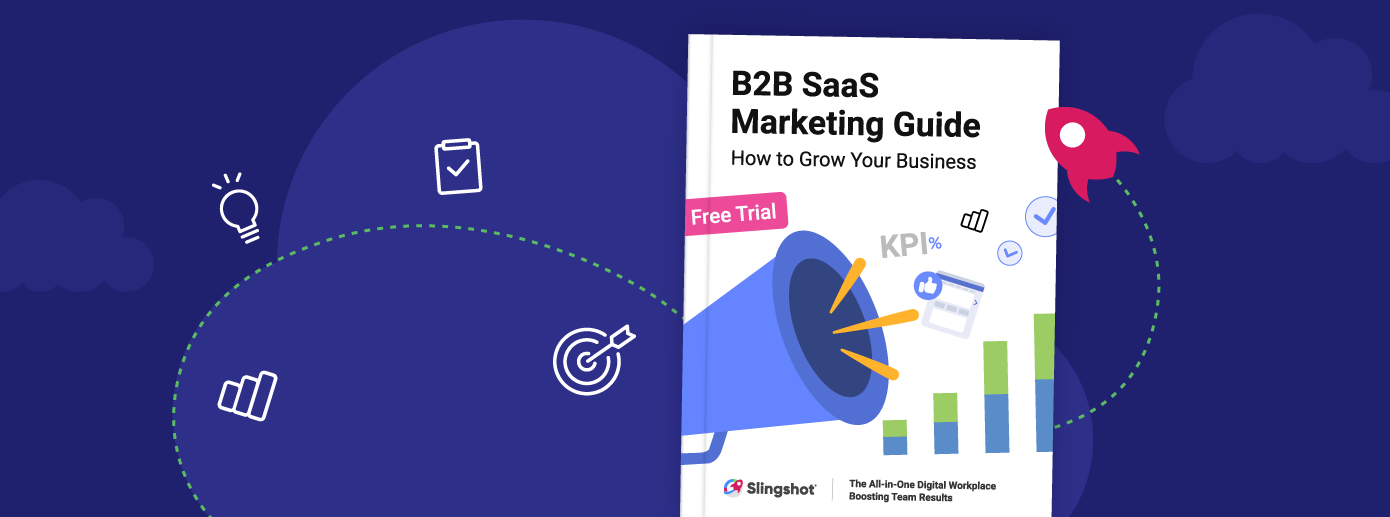
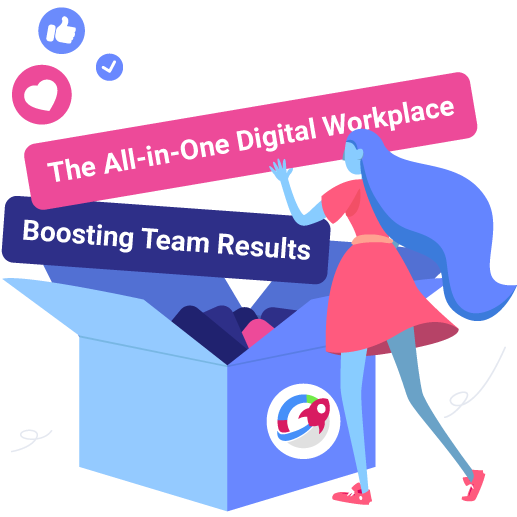
¿Qué es el análisis predictivo y por qué es importante?
El análisis predictivo es un tipo de análisis de datos que se utiliza para predecir eventos. En este blog te explicamos cómo funciona, cuáles son las principales técnicas de análisis predictivo, cuáles son sus beneficios para las empresas y mucho más + ejemplos.
Resumen ejecutivo:
El análisis predictivo es un tipo de análisis de datos que se utiliza para predecir eventos. En este blog te explicamos cómo funciona, cuáles son las principales técnicas de análisis predictivo, cuáles son sus beneficios para las empresas y mucho más + ejemplos.
En el mundo empresarial, la analítica ayuda a las organizaciones a optimizar sus procesos internos y externos, expandir y, en última instancia, aumentar su rentabilidad. Algunos tipos de análisis de datos se centran en ayudar a los usuarios a comprender qué y por qué sucedieron las cosas, mientras que otros tipos de análisis de datos se centran en proporcionar información sobre lo que podría suceder en el futuro. Este es el concepto de análisis predictivo, una herramienta de análisis de datos que las empresas utilizan para identificar riesgos y oportunidades y guiar su toma de decisiones.
¿Qué es el análisis predictivo?
El análisis predictivo es un tipo de análisis de datos que se utiliza para predecir eventos. Analiza los patrones de datos actuales e históricos para determinar si es probable que alguno de esos patrones vuelva a surgir y luego utiliza algoritmos estadísticos y técnicas de aprendizaje automático para identificar la probabilidad de resultados futuros. Esto permite a las empresas de cualquier tamaño e industria ajustar dónde utilizan sus recursos, mejorar la eficiencia operativa, reducir el riesgo, elaborar estrategias basadas en hechos y guiar su proceso de toma de decisiones.
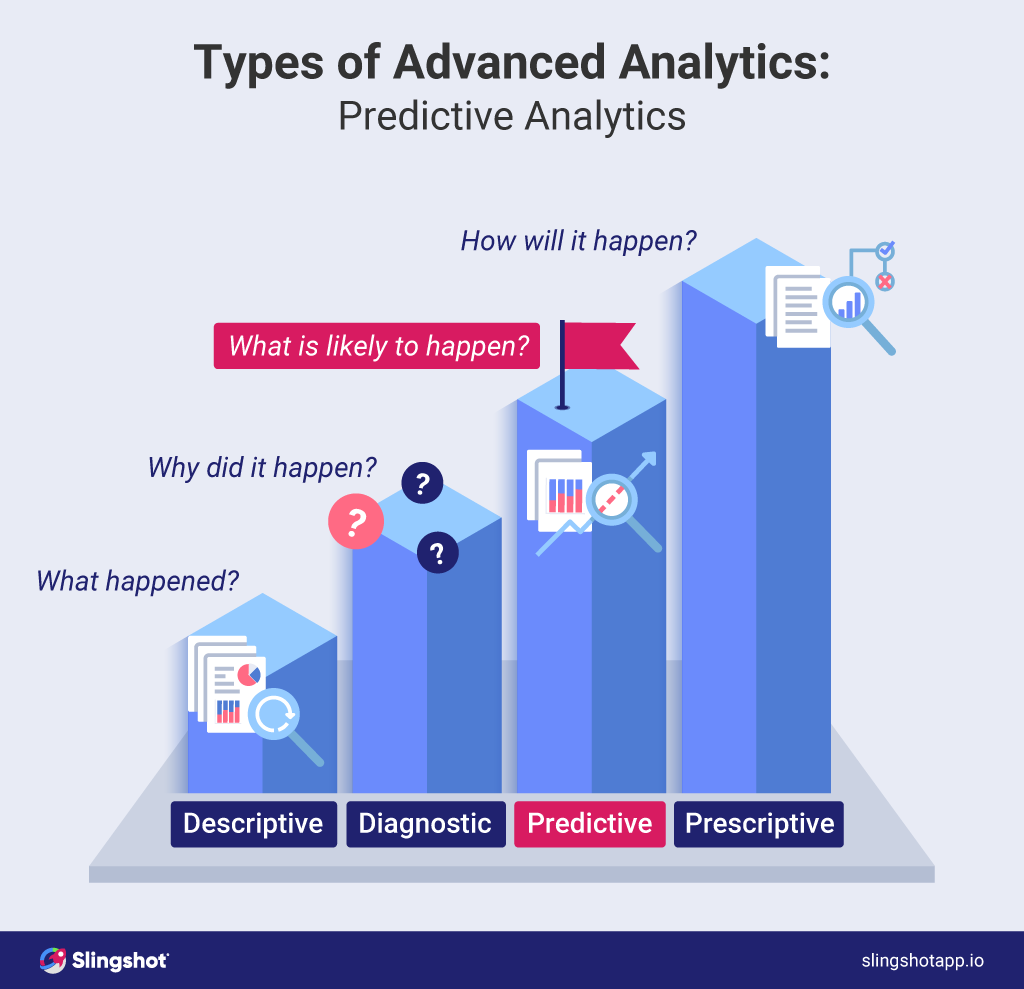
¿Cómo funciona el análisis predictivo?
Cuando se trabaja con análisis predictivo, el primer paso es identificar el problema que intenta resolver y qué cubrirá su proyecto. A partir de aquí, existe un flujo sistemático que sigue el proceso de análisis predictivo:
- Definición del proyecto: el aspecto más crucial de la definición del proyecto es comprender el objetivo de su proyecto de análisis predictivo. ¿Qué preguntas te gustaría responder? ¿Conoce el tipo de eventos o resultados que desea predecir? Conocer las respuestas a estas preguntas le ayudará a obtener el valor adecuado de esta iniciativa.
- Recopilación de datos: el análisis predictivo es más eficaz cuando se puede aprovechar un gran volumen de datos para dividirlos y ejecutar los algoritmos necesarios. Si su organización ha definido procesos para recopilar datos, entonces no debería haber ningún desafío en acumularlos. Pero si no es así, es posible que deba configurar una herramienta de extracción o agregación de datos para recopilar los datos de su organización. Determinar cómo obtener datos debe ser parte de la definición de su proyecto.
- Limpieza de datos: antes de comenzar a analizar sus datos, es importante limpiarlos para un análisis eficaz. El proceso de limpieza implica la consolidación de datos de múltiples fuentes en una única base de datos y garantizar que los datos tengan un formato coherente.
- Análisis profundo de datos: el objetivo del análisis de datos es revelar tendencias y patrones en los datos y utilizar esa información para crear modelos predictivos que puedan representar acciones futuras. Este paso implica la realización de dos métodos generales para el análisis de datos: métodos de regresión estadística y técnicas de aprendizaje automático.
- Construcción de modelos: una vez que sus datos hayan sido procesados y analizados, puede comenzar a construir un modelo predictivo para anticipar eventos futuros. Se generarán múltiples modelos y usted deberá seleccionar cuál es el mejor (el más preciso) para predecir los eventos futuros de su proyecto.
- Implementación: el siguiente paso es implementar el modelo seleccionado en el uso diario. El uso diario vuelve a estar vinculado a la definición del proyecto y a su objetivo inicial. Por ejemplo, si el modelo se utiliza en la industria de las telecomunicaciones para predecir el uso de la red, entonces este modelo debe utilizarse para monitorear el desempeño del servicio en tiempo real y generar informes sobre posibles problemas de conectividad o desempeño lento.
- Monitoreo: una vez que se implementa el modelo, es necesario monitorearlo y revisarlo constantemente para garantizar su efectividad. Se pueden integrar nuevos datos a medida que estén disponibles para respaldar el modelo de forma continua.
Técnicas de análisis predictivo
El análisis predictivo se basa en gran medida en modelos/técnicas complejos que han sido diseñados para hacer inferencias sobre los datos que encuentra. Estas técnicas de análisis predictivo utilizan algoritmos y aprendizaje automático para poder analizar datos históricos y actuales con el fin de predecir tendencias futuras.
Hay tres técnicas principales utilizadas en el análisis predictivo: árboles de decisión, regresión y redes neuronales.
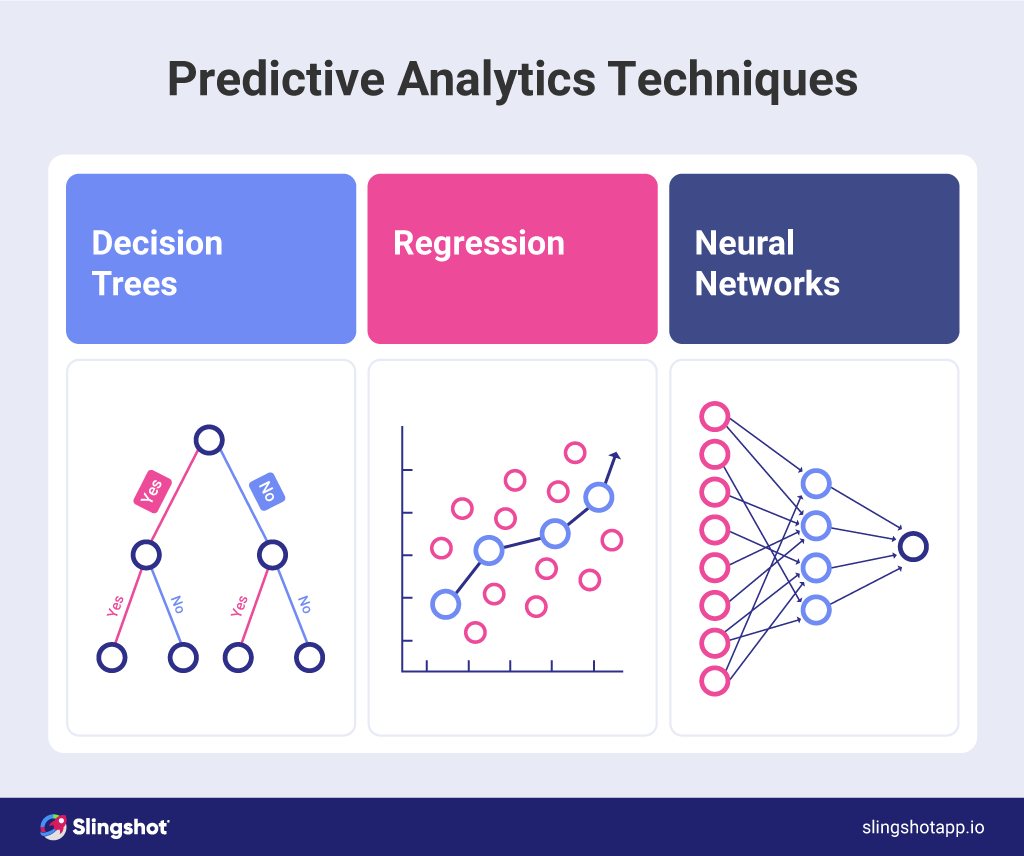
Árboles de decisión: esta es una de las mejores técnicas de análisis predictivo porque maneja los valores faltantes y es fácil de comprender. Los árboles de decisión utilizan ramificaciones para mostrar visualmente las posibilidades que surgen de cada resultado o elección. Cada rama es una posible decisión entre dos o más opciones, mientras que cada hoja es una clasificación: un sí o un no.
Regresión: existen tres técnicas de regresión para diferentes escenarios. Diferentes preguntas sobre datos requieren diferentes aplicaciones de regresión, pero en general, la técnica de regresión de análisis predictivo ayuda a comprender las relaciones entre variables. La regresión lineal se utiliza si solo se puede atribuir una variable independiente a un resultado. Se utiliza la regresión múltiple si múltiples variables independientes tienen un efecto sobre un resultado. Y la regresión logística se utiliza cuando la variable dependiente es binaria.
Las redes neuronales son la técnica de análisis predictivo más complicada. Utiliza algoritmos para descubrir posibles relaciones dentro de conjuntos de datos. Las redes neuronales emplean IA, lo que permite un reconocimiento de patrones más sofisticado.
¿Por qué es importante el análisis predictivo?
Hoy en día, los datos son uno de los activos más valiosos de las empresas. El análisis de datos es extremadamente importante en el mundo empresarial, transformándolo de múltiples maneras. Analytics está ayudando a las empresas a sobrevivir en el mercado.
El análisis predictivo, específicamente, es importante porque permite a las organizaciones predecir con precisión lo que probablemente sucederá y tomar decisiones críticas basadas en esos datos. Hoy en día, muchas empresas no logran sobrevivir debido a su incapacidad para pronosticar y, por lo tanto, planificar y ejecutar estrategias comerciales exitosas.
Las empresas que toman sus decisiones clave basándose en la intuición o en conjeturas han perdido mucho tiempo y dinero al no lanzar productos que sus clientes objetivo quieren o necesitan. Por otro lado, las empresas que utilizan análisis predictivos para impulsar su toma de decisiones obtienen una ventaja competitiva. El análisis predictivo permite a las organizaciones superar a la competencia aprovechando nuevas oportunidades.
Beneficios del análisis predictivo
Existen numerosos beneficios al utilizar análisis predictivos. Estos son sólo algunos de los mejores:
Mejorar la toma de decisiones
Al analizar datos históricos y tendencias de la industria, el análisis predictivo ayuda a las organizaciones a hacer predicciones informadas sobre lo que les deparará el futuro y, por lo tanto, a formular estrategias basadas en escenarios probables. Esta capacidad predictiva permite a todos los usuarios empresariales tomar decisiones más inteligentes respaldadas por hechos. Además, la toma de decisiones basada en datos mejora la productividad y aumenta la confianza de su equipo.
Detectar fraude
El análisis predictivo puede identificar patrones para detectar y prevenir comportamientos fraudulentos. A medida que la ciberseguridad se convierte en una preocupación creciente, el análisis predictivo examina todas las acciones en una red en tiempo real para detectar anomalías que puedan indicar vulnerabilidades y amenazas cibernéticas. Esto ayuda a las empresas a implementar procedimientos relevantes y mantener sus datos seguros.
Reducir el riesgo
Con la ayuda del análisis predictivo, los analistas pueden pronosticar áreas potenciales de riesgo e identificar cómo estos riesgos pueden afectar su negocio. Esto se utiliza en muchas industrias diferentes, pero quizás sea más beneficioso para las compañías financieras y de seguros. Por ejemplo, los puntajes crediticios son un ejemplo bien conocido de análisis predictivo. Gracias a esto, los profesionales financieros pueden determinar la solvencia de un individuo y tomar decisiones más seguras sobre si el prestatario cumplirá con su obligación de deuda.
Reducir costos
El análisis predictivo también puede ayudarle a reducir los costos operativos al ayudarlo a tomar decisiones más informadas sobre cuándo realizar nuevos pedidos, cuándo invertir más en sus campañas de marketing o cómo administrar su inventario y fijar el precio de sus productos.
Mejorar la eficiencia en las operaciones
Una de las fortalezas más importantes del análisis de datos es la mejora de la eficiencia de las operaciones. Muchas organizaciones utilizan análisis predictivos para optimizar los flujos de trabajo, gestionar recursos y optimizar el rendimiento. Los datos les ayudan a revelar dónde pueden mejorar, cómo pueden hacerlo y optimizar sus procesos y rendimiento generales para obtener la máxima rentabilidad.
Identificar nuevas oportunidades de productos/servicios
Dado que el análisis predictivo en esencia predice el futuro, es de gran importancia cuando se trata de desarrollar nuevos productos/servicios.
"El análisis predictivo en el desarrollo de productos tiene el potencial de afinar los pronósticos sobre el rendimiento del producto, sus fallas y el tiempo de inactividad, generando así un valor increíble para las organizaciones", dice Amit Joshi.
Análisis predictivo versus prescriptivo
El análisis prescriptivo es la forma más avanzada de análisis de datos. Combina los conocimientos del proceso de análisis descriptivo, que proporciona conocimientos sobre lo que sucedió, el proceso de análisis de diagnóstico, que proporciona conocimientos sobre por qué sucedió, y el proceso de análisis predictivo, que proporciona conocimientos sobre lo que podría suceder. De esta manera, los usuarios de análisis pueden anticipar qué sucederá, cuándo sucederá, por qué sucederá y cómo.
Tanto el análisis predictivo como el prescriptivo son componentes del análisis de datos comerciales y ambos se utilizan para informar y guiar sus estrategias comerciales y el proceso de toma de decisiones en función de los datos recopilados. La principal diferencia entre los dos es que el análisis predictivo pronostica posibles resultados futuros, mientras que el análisis prescriptivo le ayuda a elaborar recomendaciones específicas para el siguiente paso óptimo.
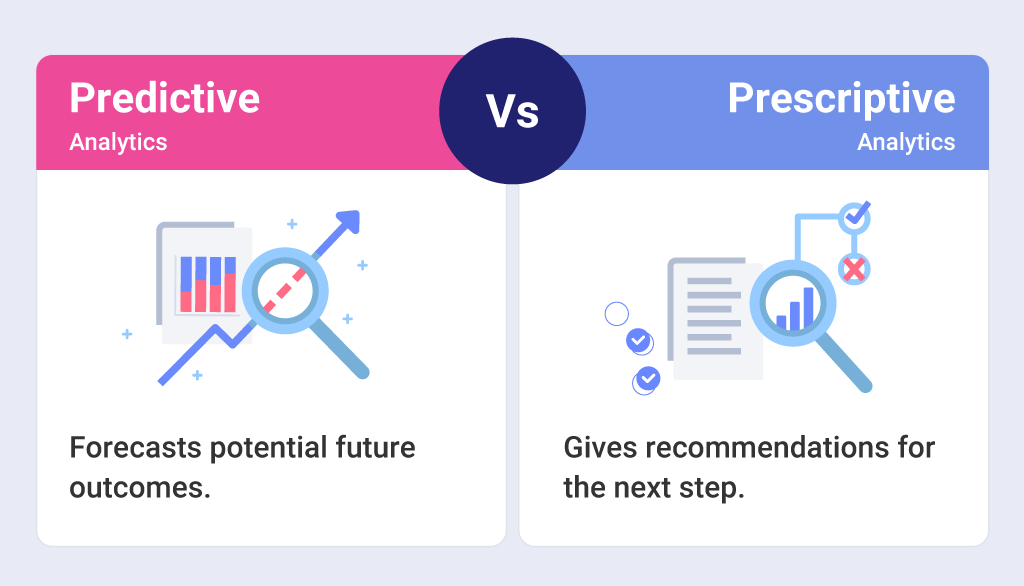
Pero no deberías confiar únicamente en uno u otro. Cuando se utilizan en conjunto, ambos tipos de análisis pueden ayudarlo a crear la estrategia comercial más sólida y efectiva posible. Es fantástico saber qué podría pasar en el futuro, pero si no identificas cuál debería ser tu próximo paso para aprovechar al máximo este conocimiento, entonces estarás perdiendo muchas oportunidades y no podrás lograr resultados óptimos.
Análisis predictivo versus aprendizaje automático
Un error común es pensar que el análisis predictivo y el aprendizaje automático son lo mismo. Bueno, no lo son, aunque entendemos por qué algunas personas pueden pensar así. Expliquemos.
Al leer hasta aquí, ya sabe qué es el análisis predictivo; en pocas palabras, es un proceso de análisis que nos ayuda a identificar y comprender posibles resultados futuros. En esencia, el análisis predictivo utiliza una serie de técnicas estadísticas, incluido el aprendizaje automático. Por otro lado, el aprendizaje automático es un subconjunto de la Inteligencia Artificial (IA) que permite a las computadoras/sistemas aprender sin programación explícita. El aprendizaje automático utiliza algoritmos para predecir nuevos valores de salida mediante el uso de datos históricos.
Entonces, ¿cuál es exactamente la diferencia entre análisis predictivo y aprendizaje automático? Ambos desempeñan un papel crucial para ayudar a las organizaciones a cultivar una cultura basada en datos y diseñar estrategias comerciales mejores y más inteligentes. Sin embargo, donde el aprendizaje automático está fuertemente orientado a la codificación y su función principal es permitir que las computadoras aprendan automáticamente sin asistencia humana y ajusten sus acciones de acuerdo con sus aprendizajes, el análisis predictivo todavía depende de la intervención humana. El análisis predictivo necesita analistas de datos para determinar y probar las correlaciones entre causa y resultado.
Ejemplos de análisis predictivo
Cualquier industria puede utilizar el análisis predictivo para optimizar las operaciones, reducir los riesgos, desarrollar estrategias comerciales y de marketing mejores y más efectivas, reducir costos, aumentar los ingresos y, por supuesto, pronosticar resultados. A continuación se muestran algunos ejemplos de cómo se utiliza el análisis predictivo en diferentes industrias:
Atención médica: las organizaciones de atención médica, los hospitales y los médicos utilizan el análisis predictivo de varias maneras diferentes, incluida la simplificación inteligente de las operaciones internas, el pulido de la utilización de sus recursos y la mejora de la coordinación y eficiencia de los equipos de atención. Pero lo más importante es que el análisis predictivo les permite identificar pacientes en riesgo y el desarrollo de enfermedades.
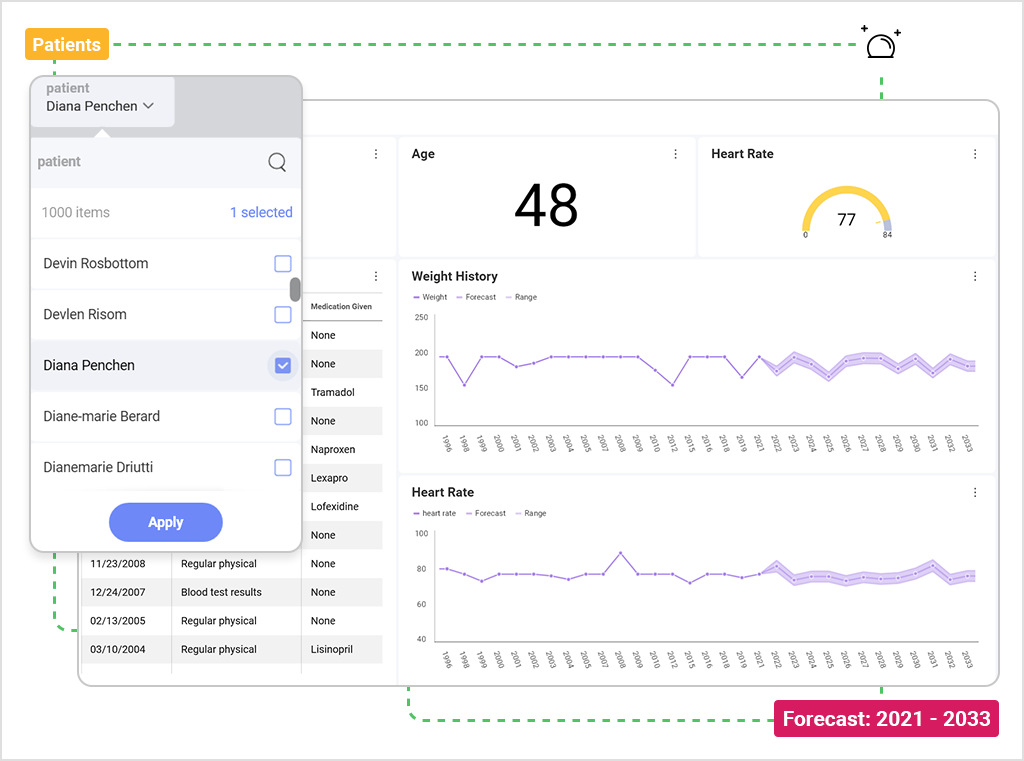
Fabricación: para los fabricantes es muy importante revelar los factores que conducen a fallas de producción y reducción de la calidad, así como optimizar las piezas, los recursos y la distribución, por lo que utilizan análisis predictivos para monitorear el desempeño de los proveedores, predecir los requisitos de mantenimiento, optimizar la capacidad de producción y más. .
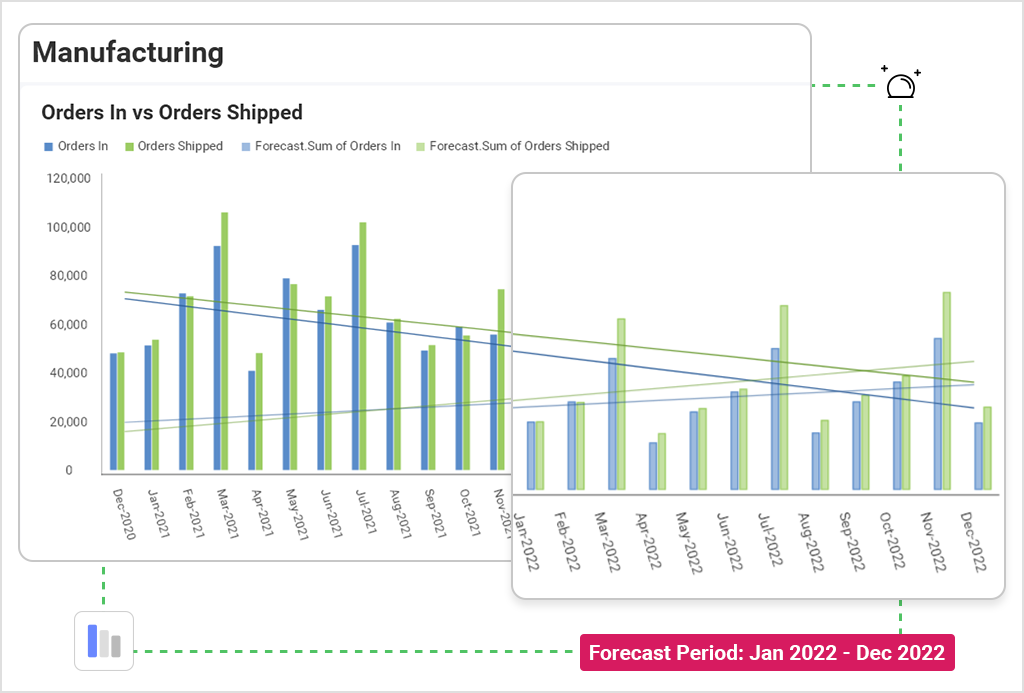
Comercio minorista: los minoristas utilizan análisis predictivos para pronosticar ventas y demandas futuras y optimizar sus estrategias de precios, analizar la efectividad de los eventos promocionales y determinar qué ofertas son las más apropiadas para los consumidores.
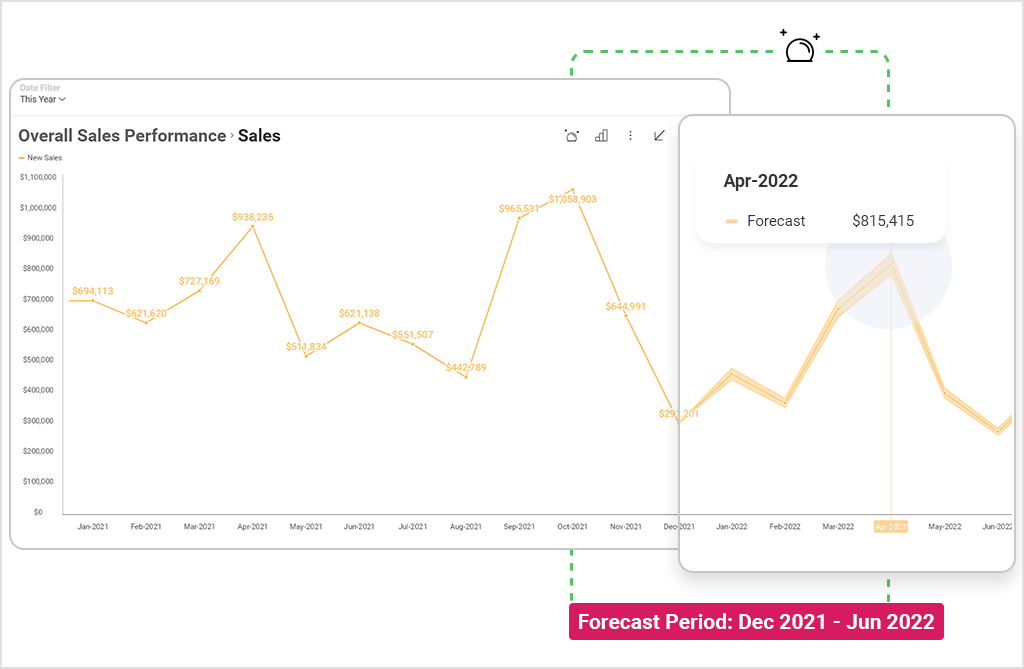
Marketing: los equipos de marketing utilizan análisis predictivos para observar cómo han reaccionado los consumidores ante la economía general al planificar una nueva campaña y utilizan estos conocimientos para crear y ejecutar campañas específicas que incitarán a los consumidores a realizar una compra.
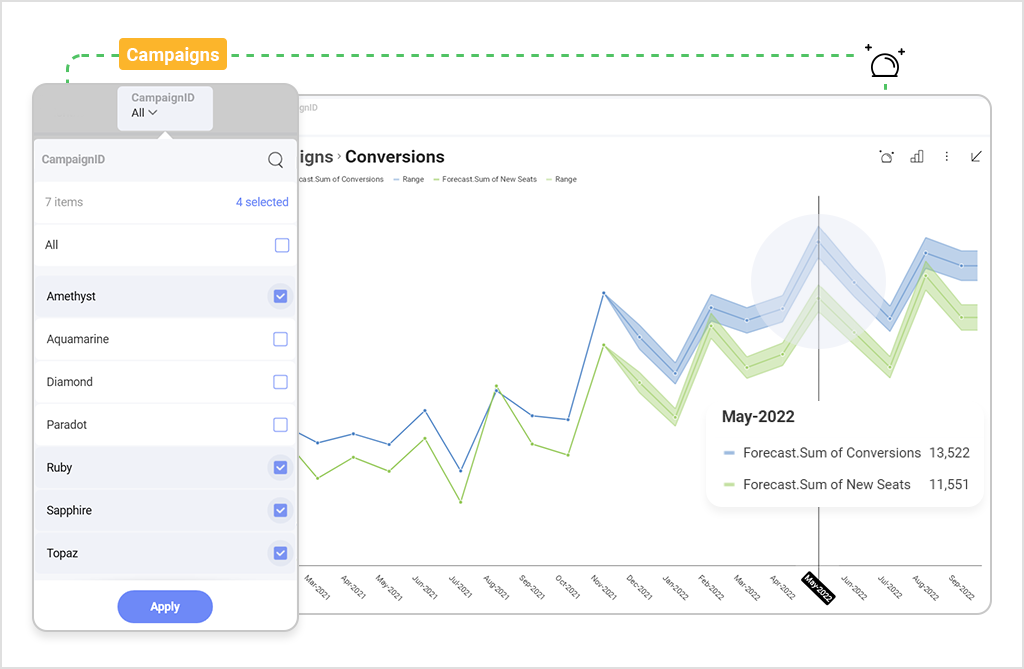
Energía: los análisis en plantas de energía pueden ayudar a predecir fallas en los equipos y necesidades futuras de recursos, o cuándo las turbinas generadoras de energía necesitan mantenimiento. También puede predecir cuándo los clientes podrían recibir una factura más alta y enviarles alertas.
Clima: uno de los mejores ejemplos de análisis predictivo es el pronóstico del tiempo. El pronóstico del tiempo actual es posible durante los próximos meses gracias a los satélites que monitorean la tierra y la atmósfera. Introducen esos datos en modelos que determinan qué tiempo esperar.
Aproveche el análisis predictivo avanzado con Slingshot
Las herramientas de análisis de datos simplifican la forma en que los usuarios procesan y analizan los datos, exploran las relaciones y correlaciones entre conjuntos de datos e identifican patrones y tendencias para su interpretación. Una de estas herramientas es Slingshot.
Slingshot es una herramienta que agrega análisis de datos, gestión de proyectos y contenidos, y chat, todo en una aplicación intuitiva. Como herramienta para el análisis de datos, Slingshot ayuda a los usuarios a aprovechar la información procesable en el punto de impacto. Ofrece sólidas funcionalidades de análisis avanzado, que incluyen aprendizaje automático, combinación de datos, vinculación de paneles, catálogos de datos y mucho más. Gracias al motor completo de inteligencia empresarial que contiene, puede conectarse rápidamente a sus datos y crear un panel de control hermoso e informativo con solo unos pocos clics.
Con Slingshot, puede acelerar el tiempo de obtención de información y desbloquear todo el potencial de los datos de su empresa. ¿Aún no estás convencido? Pruebe Slingshot de forma gratuita y compruebe por sí mismo cómo puede ayudar a su equipo a utilizar los datos más fácilmente que nunca.
Artículos relacionados
¿Está listo para multiplicar por 10 su negocio con la toma de decisiones de IA?
Solicite una demostración gratuita de SlingshotCOMPARTE ESTA PUBLICACIÓN




